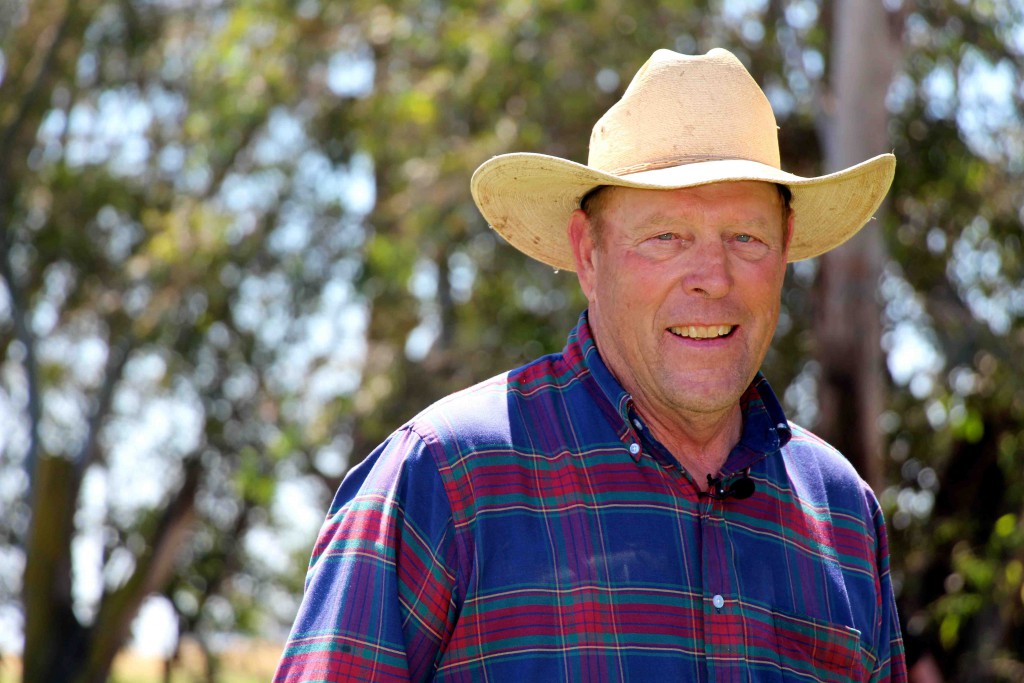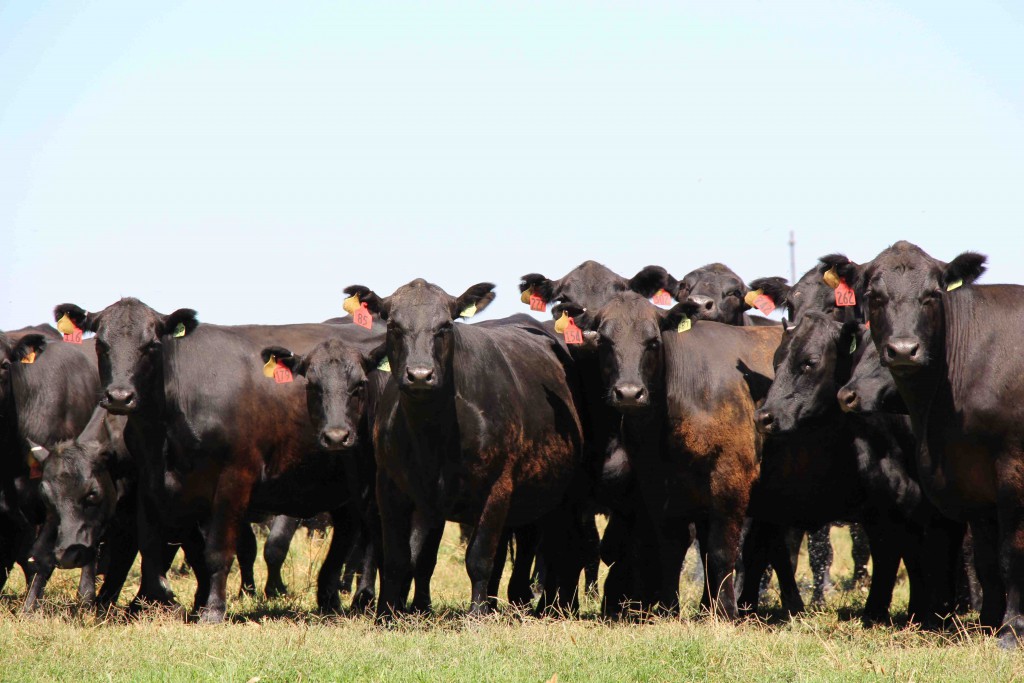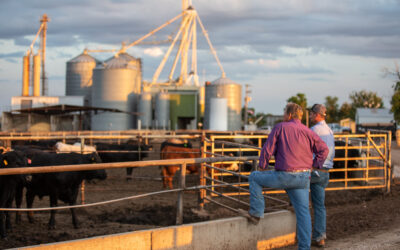Foundation not easily shakin’
“Hey there, kid, what’s shakin’?”
I had exactly one conversation with Herb Holzapfel before he began answering my phone calls like this.
I teased he had a voice for radio. He shrugged. If so obliged, it’s not that he wouldn’t fit voiceover work into his already booming schedule; rather, he’s just not interested. He’ll stick to his rice, airplanes and cattle.
Always the cattle. “I’d rather lose money than give up my cows,” he says, standing among a herd he affectionately calls his “girls” as they rest in the shade. Neither is the case for the Willows, Calif., rancher but it’s often a response to those who suggest he reverse his ratio of grazing pasture and rice fields.
“I’d rather lose money than give up my cows,” he says, standing among a herd he affectionately calls his “girls” as they rest in the shade. Neither is the case for the Willows, Calif., rancher but it’s often a response to those who suggest he reverse his ratio of grazing pasture and rice fields.
Holzapfel sits on a goldmine, after all. The lush Sacramento Valley land where he was born and lives rests on a particular soil type conducive for rice farming – sticky rice to be specific – and it and nearby tracks supply 80% of demand for sushi restaurants worldwide.
All that’s to say, the Angus cattle still get first dibs. Rice is for the off-season.
Years that followed were for growth and expansion. Limitations that came his way were viewed as opportunities rather than roadblocks; his memory full of challenges he’s met and conquered.
- Construction costs too high, “We’ll build the house ourselves.”
- Equipment loans too bleak, “I’ll get on the bank board.”
- Bull too expensive, “I’ll breed my own.”
The last set in motion an established commercial AI program that spans more than 40 years and causes orders for breeding stock to fill a year in advance. With his mature cows (some 15 and 16), it’s not unusual to reach an 80% success rate through AI.
Not to mention the value of getting rid of those that don’t meet expectations.
“My biggest culling criteria is fertility,” he says.
Carcass is important as udders, feet and longevity fall in behind functionality. Selecting bulls with birth weight (BW) expected progeny differences (EPDs) in the 3.0 to 4.0 range makes for more pounds of beef, he says, noting some cows have done well with calves from a bull with a 4.9 BW. Genex published reports say his steers perform, too, with 60% to 70% producing Certified Angus Beef carcasses.
If it weren’t for his AI program, “I’d be forced to go out of the cattle business.”
Thanks for allowing me to tell your story,
Laura
You may also like
From Modest Beginnings to Excellence
Gilchrist Farm recently received the 2024 Certified Angus Beef Canadian Commitment to Excellence award. This prestigious honor recognizes their exceptional achievements in high-quality Angus genetics and management. Over the years, they have transformed their operation by embracing superior Angus genetics. Their commitment to high standards and innovative practices has distinguished them as a model of excellence in the industry.
From White House to Farmhouse
At Pleasant Valley Farm in Brookville, MD, four generations of the Stabler family have blended tradition and innovation to create a thriving, diversified Angus operation. Honored with the Ambassador Award at the 2024 Certified Angus Beef (CAB) Annual Conference, the Stablers exemplify a commitment to sustainable farming, community engagement and educational outreach. Their significant contributions to the hosting on behalf of the CAB brand highlight their commitment and play a key role in receiving this award.
What’s Good for the Cattle, Is Good for the Wetlands
JY Ferry & Son, Inc., named the 2024 Certified Angus Beef Sustainability Award winner, exemplifies how sustainability in agriculture can bridge quality beef production, land stewardship, and wildlife management. At JY Ferry & Son, what’s good for the cattle is good for the wetlands—and good for the next generation of this multi-generational family business.
Humble Growth
Customers from around the world file into the Shamrock Shack beside their sale ring each spring and fall. They’re not just buying into Connealy cattle, but the customer-service guarantee. For getting that and a lot more right, Connealy Angus was recognized with the 2024 Seedstock Commitment to Excellence award.
Feeding Better Cattle Better
Not everyone is cut out to be a cattle feeder. It’s an art and a science that comes with a need to overcome risk. Wayne Carpenter fed his first pen of steers in 1980 and lost money. But he stuck with it. Today with their sons’ families, he and wife Leisha run the 15,000-head-capacity Carpenter Cattle Company.
Working for Premiums
The commercial Angus rancher from Collyer, Kansas, came back for daily homework in 1999 after a year at college. For 25 years now, he’s studied all the ways to grow his family’s W6 Cattle cow-calf herd with Angus at the base. Guided by data, Walt worked to improve the herd from zero Primes to averaging 60 percent. Learning what drives premiums prompted improvement.
Luling Foundation Earns 2024 Progressive Partner Award
Setting or rising, the sun casts golden hues over cattle grazing the Luling Foundation’s sprawling fields and invokes the weight of history and hope. Rooted in faith, quality and community, Davis’ legacy continues to flourish, reminding all of the profound impact one person’s vision can have.
More Than A Meat Scientist
On the surface, he’s a meat scientist. Others know him as a meats judging coach. Some call him “the father of instrument grading.” To those who’ve worked most closely with him, Dr. Glen Dolezal is much more.
You, Your Cows and Their Feed
Expert guidance from Dusty Abney at Cargill Animal Nutrition shares essential strategies for optimizing cattle nutrition during droughts, leading to healthier herds and increased profitability in challenging conditions.
Marketing Feeder Cattle: Begin with the End in Mind
Understanding what constitutes value takes an understanding of beef quality and yield thresholds that result in premiums and/or discounts. Generally, packers look for cattle that will garner a high quality grade and have excellent red meat yield, but realistically very few do both exceptionally well.










